March 2020
I apologise for being a little late with my update this month but I have been buried in a book (which will be published this September and is about all the wildlife here in this garden) and lost track of the days.
What with some of the wettest weather I have known in my life, February was a strange month, so it is a relief to arrive at March.
In fact as I write this, on March 1st, we are still flooded, with water stretching across the fields as far as the eye can see, but it has receded from most of the garden. We are almost getting used to it, so incessant has been the rain. The serious point of course, is that we are all going to have to get used to it, because this is the face of climate change – wetter, milder winters punctuated by extreme storms of wind and rain. I am sure we will have some snow and ice too, but less often and lasting less long.
As someone living on a flood plain this is at best unwelcome – we have been unable to get down the lane for a few days even in a Landrover on three separate occasions this winter – and at worst alarming.
As a gardener this is a challenge that requires creativity rather than alarmism. In fact the garden looks remarkably unaffected by the weather as we head into Spring. March is traditionally the month of the most fickle weather and anything from heavy snow to shirt-sleeve warmth – sometimes on the same day – can be expected. But none of that can stop the inexorable march of Spring. The daffodils are at the best, the first tulips appear, fritillaries, hellebores, snowflakes, late crocus, irises and above all the surging of the first green leaves starts to unfurl in all the hedgerows and trees. Weather can do nothing to dim this excitement.
Because March is both the end of winter and simultaneously the undeniable start of Spring – although increasingly much of February is feeling spring-like in this garden – there are winter jobs that should be finished and spring jobs to be cracking on with. In short it is a busy time. The more you can do in March the better the garden will be later in the year.
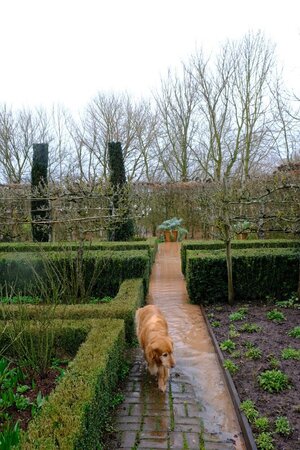

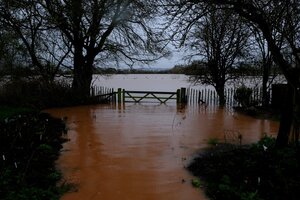
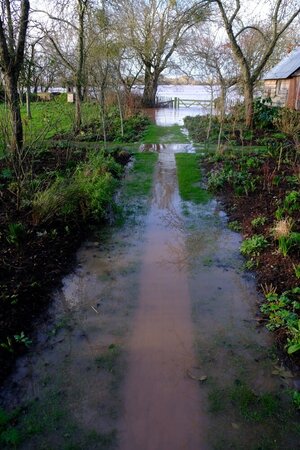
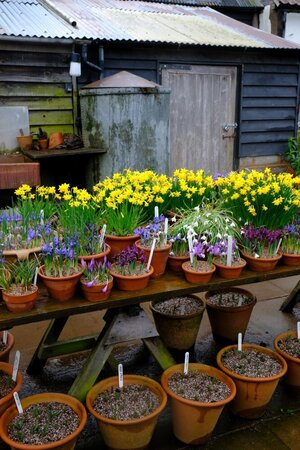

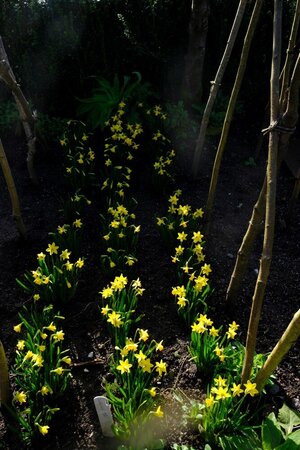
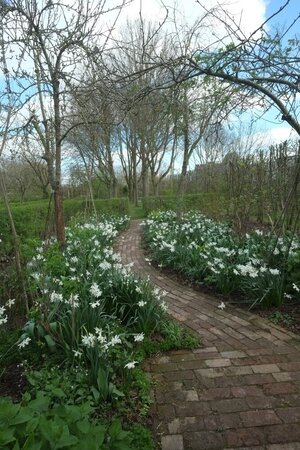
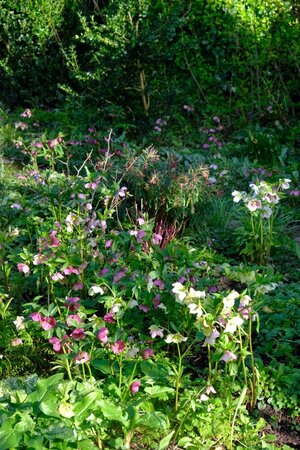
What to do in the garden this month:
WILDLIFE IN THE GARDEN
KEEP FEEDING BIRDS. Most birds are nesting this month and many will start laying too. So this a time that puts great demands on their energy when there is not much natural food around so keep feeding the birds all month concentrating on high energy items such as fat, peanuts and sunflower seeds.
DO NOT DISTURB frogspawn. Frogs like to spawn in shallow, still water, so if you are lucky enough to have some in your pond (and occasionally even in a puddle) then leave it well alone and do not be tempted to clear the pond or plant anything. Wait until the middle of next month when the tadpoles will all have hatched.
Many creatures such as hedgehogs, bats, dormice, grass snakes, toads, newts and many butterflies will be starting to come out of hibernation or a state of torpor. Try not to disturb natural hibernation spots, especially if you are vigorously tidying up after a long winter. These creatures all make a slow start and will be lethargic and weak – be mindful of them.
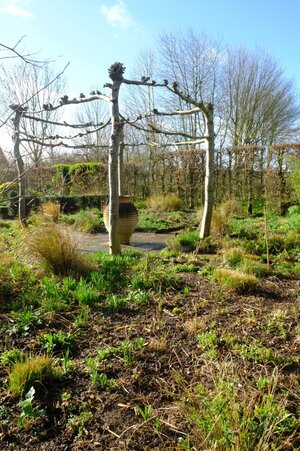


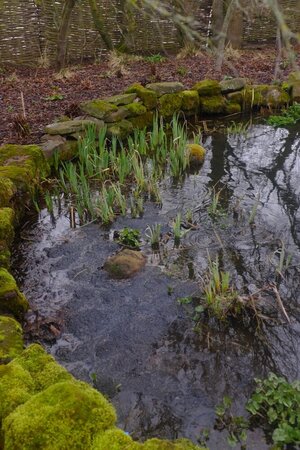
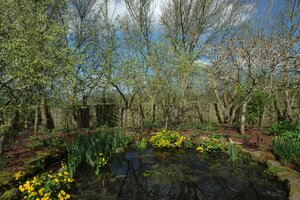
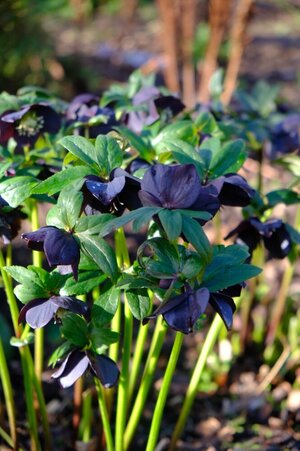
- Any herbaceous plant can be divided this month. Dig the whole plant up and discard the centre section to the compost heap, replanting the more vigorous outside parts of the plants in groups which will grow together to make one large plant. It is worth doing this to all herbaceous perennials every three to five years.
- If your soil is ready then March is a good time to plant and move things around. But ‘ready’ means, above all, warm enough. The only way to know this is by touch. Pick up a handful of earth. If it feels cold and clammy to the skin then seeds will not germinate and roots will not grow. If it feels warm, holds together when squeezed and yet can easily be crumbled then it is ideal.
LAWNS
To get a ‘good’ lawn you have to think positively. Put your efforts into healthy grass rather than fighting perceived ‘problems’ like daisies, moss, ants, wormcasts, moles, plantains, dandelions and fairy rings. Nine times out of ten if the grass is healthy then everything else will look after itself.
The best grass likes very well drained soil. Moss, for example, is always a symptom of poor drainage, made worse by shade. Unfortunately even the best prepared soil becomes compacted by matted roots, rain and, especially, normal family use. The answer is to work on it at least once a year by sticking a fork in the ground and wiggling it about and repeating the process every 6 inches or so.
Then mix up equal portions of sieved topsoil, sharp sand and sieved leaf mould or compost. If you do not have these things to hand then just sharp or silver sand will do the job. Spread it across the area you have pricked and brush it in with a stiff broom, filling the holes with the mixture. This will help drainage and feed the grass.
It is also worth giving the lawn a good scratch with a wire rake. This will get at all the overwintering thatch and moss, and let light and water get to the soil and to the roots of the grass. Put the debris on the compost and then mow.
The grass will need mowing in March but do not cut it too short. Just give it a light trim for the rest of this month and the grass will be a lot healthier – and better able to resist summer drought – as a result.
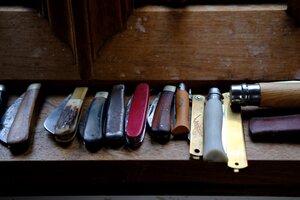


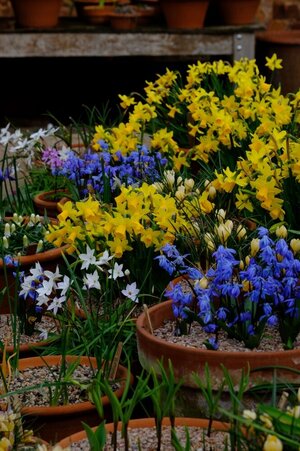
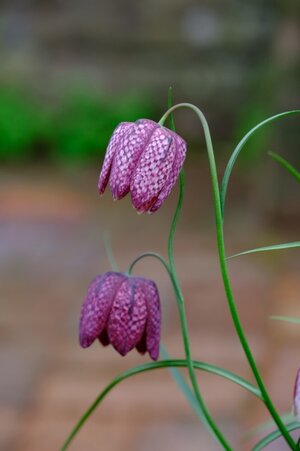
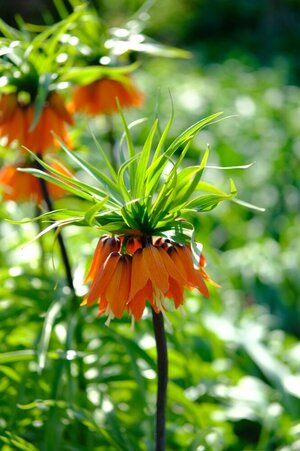
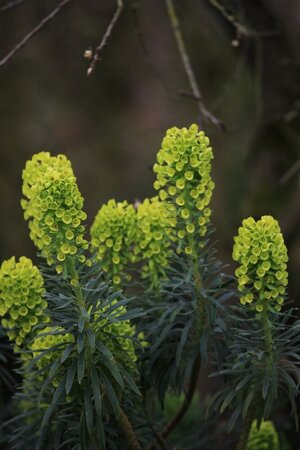

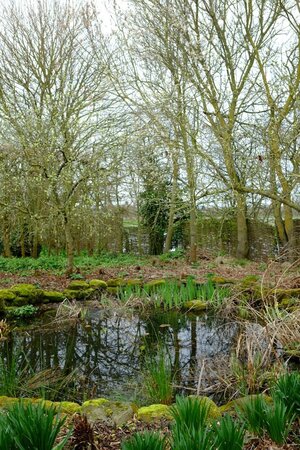
- Do NOT cut back, tie or tidy the leaves of any bulbs but let them die back naturally as next year’s flower is being created by the photosynthesis of the foliage. Leave them until the last trace of green has gone – which will be at least June – and then tidy them or cut back.
- March is a perfectly good time to prune any shrub roses, late-flowering Clematis, Buddleia, Elder, Dogwood, Rubus, Willows, and deciduous Ceanothus. Just remember two rules: cut hard to stimulate vigorous regrowth and always cut back to something, be it a leaf or a bud.
- Deciduous grasses like Miscanthus, Calamagrostis and Deschampsia should all be cut back hard to the ground before the new green shoots start to grow too long. Evergreen grasses like the Stipa and Cortaderia families should not be cut back. However comb through each plant with a rake or your hands (I advise wearing stout gloves as grasses can be very sharp) pulling out all dead growth. The old dead growth can be shredded and composted.
- When you have finished clearing and cutting back give the grasses a thick mulch with a low-fertility material – ie not garden compost or manure. I use a pine bark mulch. However, do not divide or move any grasses at this time of year. They must be growing strongly to have the best chance of surviving so wait until late May or even early June.
ALLOTMENT / VEG GARDEN
- Sow seeds under cover such as cabbage, lettuce, celery, beetroot and tomatoes. Do not sow any seeds outside if the ground feels cold to touch. If warm and dry enough, sow broad beans, beetroot, rocket, spinach, mizuna, parsnips, radish and winter lettuce.
- Chit potatoes and plant out at the end of the month if the ground is dry enough.
- Plant out onion and shallot sets. Cover them with fleece for the first couple of weeks to stop birds pulling them from the ground.
- Dig in overwintering green manure.
- Dig any unprepared ground and/or make raised beds by the end of the month.
- Prune gooseberries and red and white currants.


